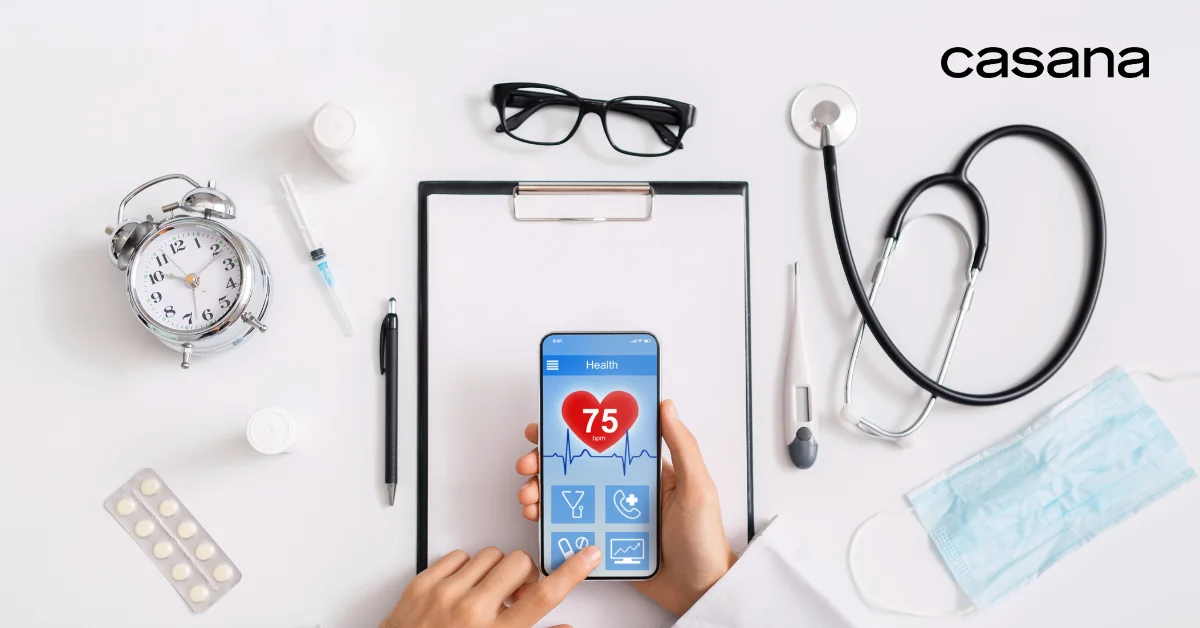From Drowning in Data to Diving for Insights: Reshaping Healthcare Information Management
Published: February 23, 2024
Gone are the days of data scarcity in healthcare. Today, the healthcare industry is drowning in an abundance of information. This abundance, while seemingly beneficial, has introduced a new set of challenges: data overload. How can we navigate this data deluge to unlock its true potential for improved patient care?
The Data Deluge: A Blessing and a Curse
Conversations with those analyzing healthcare data paints a vivid picture of their struggle with information overload. Three key themes emerge:
- Chaos in Consistency – Providers need consistent data for reporting, analysis, and decision-making. Inconsistent data across different systems creates confusion, hinders analysis, forces manual workarounds, and wastes valuable time and resources.
- Reliability Roulette – The chain of events triggered by data depends heavily on its quality. An erroneous input can disrupt decision-making and potentially impact patient care.
- Value Vacuum – While data is increasingly abundant, valuable insights often remain buried beneath layers of information. Off-the-shelf software systems, though rich in data, often fail to provide the tailored, meaningful insights clinicians seek. Technology solutions that transform data into context are the most effective in driving results.
From Data Collection to Interpretation
Traditionally, meticulous manual data entry ensured the most accuracy, but at the cost of time and subjectivity. Today, technology allows for the automated collection and generation of vast amounts of data promising efficiency, personalized care, and fueling research breakthroughs. However, the complexity it introduces can disrupt workflows and generate massive unmanageable datasets.
Data analysts play a crucial role in deciphering this data to extract meaningful insights, but access to trained personnel and tools is often limited. Staffing shortages and budget constraints further exacerbate this issue. While AI shows significant promise, it hasn’t fully earned the trust of healthcare professionals.
Automated collection and generation of data is preferred over manual entry, but a mere data dump without interpretation is unworkable. We need unobtrusive solutions that bridge the gap between data collection and meaningful insights.
The Way Forward: Customer-Centric Solutions
The future of healthcare informatics hinges on a symbiotic relationship between medical devices and healthcare systems. To achieve this, manufacturers must prioritize the needs of the end-user:
- Seamless Integration: Devices should seamlessly integrate with existing software, streamlining workflows and minimizing disruption for clinicians.
- Customization is Key: Data presentation and analysis should be customizable to cater to different user preferences and roles. How a hospital prioritizes trend analysis differs from an individual physician’s needs.
- Data with Integrity: Consistent and reliable data is paramount. Regular validation procedures and clear communication are essential for building trust and ensuring data accuracy.
Case in Point: The Heart Seat® – Empowering Patients, Guiding Providers
Casana is innovating healthcare delivery with a smart toilet seat that enables effortless, integrated, and accurate in-home health monitoring. The FDA cleared Heart Seat® exemplifies a user-centric approach to data collection. It passively captures heart rate and blood oxygenation data while users go about their daily lives, eliminating the need for additional effort or disruption. Future clinical measurements under development, such as non-invasive blood pressure, will assist medical teams with monitoring chronic conditions beyond the four walls of the physician’s office.
Key Advantages:
- Effortless Collection: By simply sitting, the Heart Seat records and securely uploads data to the Casana Cloud requiring no additional effort from the patient.
- Cloud Powered Analysis: Bio-identification and clinical measurement algorithms run with the full power of the Cloud allowing for advanced analysis and insight generation.
- Data Integration: Measurements are made available to authorized providers and care teams via EHR integrations. This allows for near real-time review within existing familiar systems saving valuable time for all those involved.
- Condition Management: The Heart Seat will enable patients and providers to more easily manage chronic conditions outside of clinical settings.
Conclusion: Diving Deeper, Not Drowning
The healthcare industry faces a unique challenge: navigating the vast ocean of data to improve patient care. By prioritizing user-centric solutions that focus on data consistency, reliability, and value extraction, we can transform this data deluge into a powerful tool for better health outcomes. Remember, it’s not about collecting more data, but about diving deeper into the data we already have to unlock its true potential.
**The Heart Seat will become commercially available only upon future clearance of non-invasive blood pressure.
Disclaimer: All of the material provided above is for informational purposes only. This content is not intended to be a substitute for professional medical advice, diagnosis, or treatment. Always seek the advice of your physician or other qualified health providers with any questions you may have regarding a medical condition.
Recommended insights
Casana and Cleveland Clinic Successfully Conclude Cardiac Rehab Stress Shifts Study
Casana, in collaboration with Cleveland Clinic, has concluded a pilot study called the Cardiac Rehab Stress Shifts Study. The study aimed to evaluate the performance of the Casana Heart Seat™ in measuring shifts in blood pressure...Read More
Casana Receives FDA Clearance for Heart Health Smart Toilet Seat
Casana announces receipt of FDA clearance for measuring Heart Rate (HR) and Oxygen Saturation (SpO2).
Heart Rate Guide: A Beat on a Key Vital Sign
Heart Rate Guide: A Beat on a Key Vital Sign Heart rate is an important vital sign that clinicians take into account when determining the general physical health of a patient. Vital signs are important indicators...Read More
